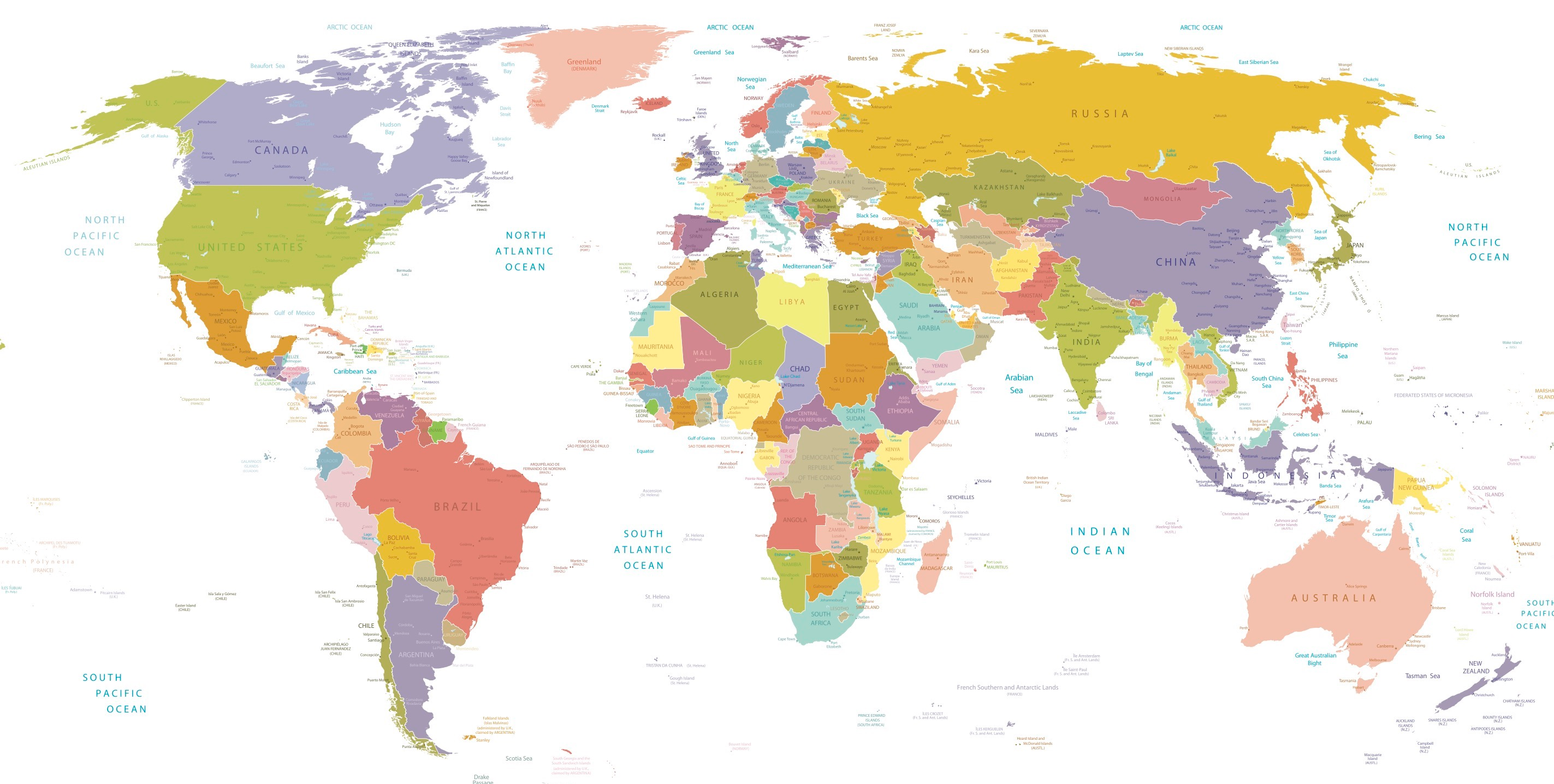Charlie Oppenheim, former Chief of Immigrant Visa Control, states in an IIUSA article that country caps of 7% will apply to each reserved visa category. As reserved visas have no value for non-backlogged countries, this has the potential of significantly reducing the number of reserved visas for investors from backlogged countries.
Oppenheim, now a Visa Consultant, is regarded in EB-5 as the foremost authority on visa processing. While he no longer works for the U.S. Department of State, his insight still carries great weight. Thus, when he, along with immigration lawyer Joseph Barnett, wrote an IIUSA article about “Reserved Visa Rules,” industry professionals and investors should take note.
Originally, when the EB-5 Reform and Integrity Act of 2022 (RIA) was enacted, the 32% reserved visa set-asides for rural (20%), high-unemployment-area (10%), and infrastructure (2%) investments appeared to carve out at least 3,200 visas every year for new investors from China, India, and Vietnam who would otherwise have to wait at least several years — if not more — for available visas.
Many EB-5 stakeholders decried taking away thousands of visas each year that could otherwise be applied against the backlog of pending investors who applied years before the RIA was enacted.
Well, pending petitioners can breathe a sigh of relief if Oppenheim does indeed have the inside track to how USCIC will allocate future reserved visas: country caps will apply not just to the total number of EB-5 visa available each year, but also to each reserved category.
Country caps reduce 3,200 ‘reserved’ visas to 672 reserved visas for those who need them
32% of reserved visas in a standard EB-5 year means roughly 3,200 visas. However, these reserved visas only have value for new petitioners who will not be “current’ on the Visa Bulletin after I-526E approval; this limits their value to only investors from China, India, and Vietnam. Without a reserved visa, such investors would have to get in line behind thousands of other petitioners from their respective countries.
But the 32% “reserved” allocation now appears to be grossly misleading. Oppenheim declares that the 7% country cap applies to each and every reserved category; this changes the numbers drastically. 3,200 reserved visas really means 672 reserved visas for those who need them (7% each for the three backlogged countries).
If Oppenheim is correct, it appears that new investors from non-backlogged countries who make a rural, high-unemployment-area, or infrastructure investment will receive visas from the reserved pool. Even though these investors will not need the benefit of a reserved visa. It’s puzzling, to say the least.
Let’s look at each reserved category and the numbers.
The rural set-aside will have 20% of total EB-5 visas or 2,000 visas in a standard year. With the 7% country caps applying to this category, each of China, India, and Vietnam are capped at just 140 visas each. And keep in mind, as each approved petition averages an issuance of 2.8 visas, 140 visas only accommodates about 50 investor families from each of those countries.
The 10% high-unemployment-area set-aside means 1,000 total visas but only 210 visas for the countries that need them — just 70 visas per backlogged country (25 investor families from each country).
The 2% infrastructure set-aside means 200 total visas but only 14 visas for each country that needs them (or about five investor families from each country).
On the face of this, it doesn’t add up. Why “reserve” 3,200 visas a year when 79% of the people who will take them have have no need for reserved visas?
Why limit just 21% of this reserved visa pool to the people who need them?
To quote from Oppenheim and Barnett’s article, this “limits the benefit of the incentive of a quicker visa number allocation…. It’s clear the county cap impacts the efficacy of these RIA provisions.”
That’s an understatement. USCIS is either, once again, misinterpreting the aim of Congress. Or this was a legislative marketing ploy to reignite waning interest from oversubscribed countries.
Potential silver lining for new investors from China, India, and Vietnam
It’s widely anticipated that new investors from the three backlogged countries will have much more demand than the 672 visas a year. Remember, that accommodates a mere 240 investor families or total investments.
However, Oppenheim throws out a silver lining for the new investors that actually need reserved visas: “Such countries could potentially benefit from the use of ‘otherwise unused’ numbers, which would be made available in priority date order without regard to foreign state of chargeability.”
So if worldwide interest doesn’t use up the set-asides the leftovers can go to any country. But how likely is this? With 3,200 reserved visas in a standard year and 672 going to three countries who need them, that leaves 2,528 visas for the “rest of the world.” If the rest-of-world usage falls under 2,528, Chinese, Indian, and Vietnamese petitioners could get the unused reserved visas.
I-526 EB-5 filings from countries other than China, India or Vietnam
To determine future rest-of-world reserved visa use, we should review recent history.
Fiscal year | I-526 filings |
2013 | 521 |
2014 | 621 |
2015 | 2,014 |
2016 | 1,828 |
2017 | 1,483 |
2,018 | 1958 |
2019 | 2,250 |
2020 | 2,762 |
If going forward the rest of the world makes just 1,000 rural or high-unemployment-area filings in a standard year going forward, with a 90% approval rate, and accounting for 2.8 family members per approved petition, this would use up 2,520 reserved visas — almost exactly 79% of 3,200 visas (2,528). In such an event, the three backlogged countries would be limited to their country cap allocation of 7% each.
In the somewhat unlikely event that rest-of-world reserve-visa filings drop to just 500 in future years, factoring in the same approval and dependent rates, this would account for 1,260 visas, leaving 1,268 extra reserved visas for China, India, and Vietnam. In such a case, these three countries would receive a total of 1,940 reserved visas, or 647 per country.
As recent rest-of-world filings consistently have hovered around the 2,000 mark, we’re not holding our breath that global interest in EB-5 will now be just a quarter of that number. With an increased minimum investment amount, interest should wane, but 1,000 rest-of-world visas a year going forward seems more plausible.
Good news for pre-RIA investors
When the RIA was enacted, many decried the fact that 32% of the visa pool would be taken away from the unused visas numbers that go to oldest petitioners in the backlog. However, this new assumption that country caps apply to the reserved set-asides changes that thinking in a substantial way.
As investors from every country take their rural and high-unemployment-area visas from the set-asides, this essentially means that just under 7% of the total visas (21% of 32%) will really be “missing" from the unused visas that go to the back of line, which comprises pending Chinese investors.
What’s more, given that the minimum-investment price increased 60%, we expect fewer total investors than in pre-COVID history and this will mean more unused visas going to the backlog. Pre-RIA investors with pending petitions should feel very good about this fact.
Lineups could be created for the reserved set-asides
It’s reasonable to expect almost all new I-526E filings from all over the world taking visas from the reserved categories; the non-backlogged countries don’t need reserved visas but the lower price tag and priority processing for rural investments will ensure this. (Yes, a small number of wealthy investors may choose to make urban investments at the $1,050,000 price tag, but this number should be insignificant.)
This coupled with the fact that Chinese, Indian, and Vietnamese investors will likely have a heightened interest in visas that don’t require a wait of several years means that demand for reserved visas should exceed supply at some point soon. Oppenheim and Barnett expect DOS to establish a Final Action Date for reserved visas sometime in FY2024; they also surmise, “If countries like China and Vietnam dominate these new filings, DOS could impose an FAD for only those nationals, but keep the 'Rest of World' current.”
It’s worth remembering that when the lineups do start for the backlogged countries they still shouldn’t be anywhere near as long as the non-reserved lineups those foreign nationals would otherwise have to endure.
Conclusion
So 32% of the EB-5 visas will be reserved even though 79% of the set-asides will likely go to investors who don’t need a reserved visa. It’s like holding reservations at a restaurant for people who can go in and take a seat any time. It defies logic. But it appears to be the current policy.
For investors from the backlogged countries, the RIA benefits will not be as expansive as most people initially thought. Instead of thinking of 20%, 10%, and 2% reserved-set-asides, open your calculator app and multiply those numbers by 0.07. Or hope that rest-of-world EB-5 interest declines below 1,000 filings a year.
And even if rest-of-world demand is low, the reserved set-asides will soon have a lineup from new Chinese, Indian, and Vietnamese investors. Count on it. It’s just a question of when.
And for pre-RIA investors stuck in the backlog, you don’t have to fear the RIA. You’re likely to see more unused visas go to the backlog than ever before.
The reserved set-asides being shared by all may not be the intent of Congress, but it’s appears to be where we are at now. So new investors from the backlogged countries who want a visa sooner rather than later should move swiftly.
Also read “Reserved Visa Rules, Possible Future Visa Allocation, and recommendations."




